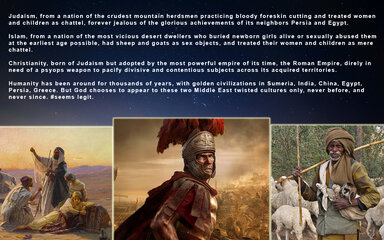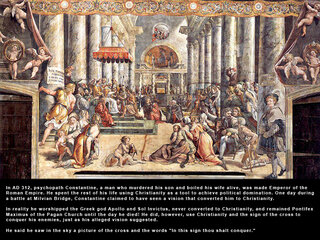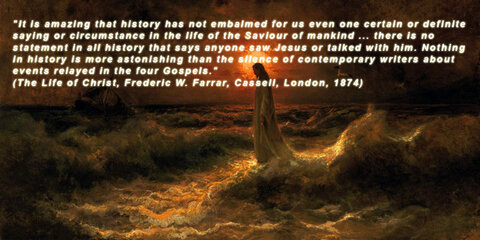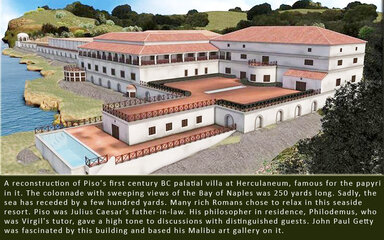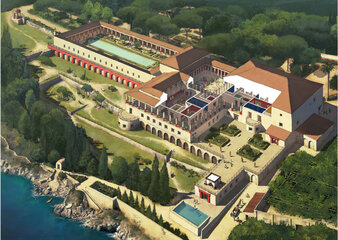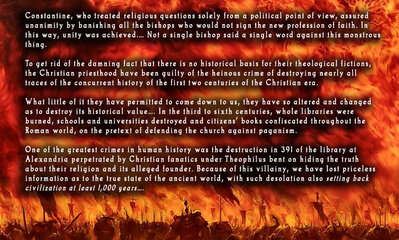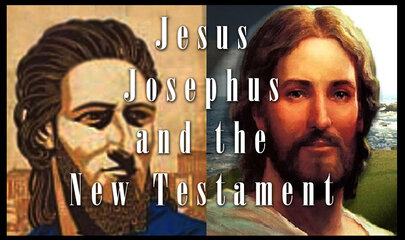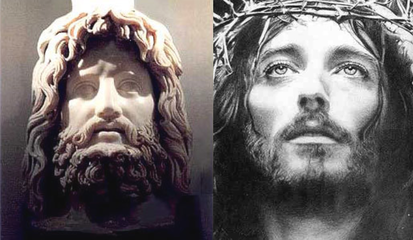- Messages
- 2,145
- Reaction score
- 5
- Points
- 28
- Thread Starter
- #21
continued from here
Also, some of the characteristics used to create the Jesus character and some of the ’sayings’ that they used, were borrowed from Hillel the Pharisee. This was all too obvious to the Jews, and especially to the Rabbis of the day, who for the most part, were relatives (descendants) of Hillel (Beth Hillel). These same were also relatives (distant?) of the Pisos, for they also were descendants of King David.
Arrius Piso used ’Hercules’ to contribute the following attributes and characteristics to his Jesus character:
By 75 CE, Arrius Piso had revised the book ’Ur Marcus’ and we now know that book as the book ’Mark’ of the New Testament. Of course, with all of these things going on and with new conspirators on the rise, the conspirators didn’t want to attract any suspicion, but at the same time they needed a system in which they could not only keep track of their own material (propaganda), but also keep their identities secret yet still be able to claim authorship—for both prosperity and their own egos.
2:2 The Epistles of Paul the Apostle to Seneca (Anneas Seneca, d. 65 CE):
The fact of the matter is that Seneca did not live long enough to see any other ’Christian’ books or paraphernalia except ’Ur Marcus’—the prototype for the book ’Mark.’ The Epistles of Paul the Apostle were written by Justus Calpernius Piso, and realizing this, it would also be realized that Seneca had long been departed. Justus didn’t start writing until the late 90’s CE, when he helped his dad and Pliny write ’Acts of the Apostles’.
Now that you have been briefed on the background of the conspiracy, here is a chronological synopsis:
Germanicus Caesar was the nephew and adopted son of the Roman Emperor Tiberius. Germanicus was born in 15 BCE, and died in 19 CE, when he was poisoned by Cnaeus Calpernius Piso, the Governor of Syria.
Cnaeus C. Piso was the father of Gaius, Marcus, and Lucius Calpernius Piso. Cnaeus died in 20 CE. Gaius Calpernius Piso was the father of Arrius Calpernius Piso, aka Flavius Josephus.
The Pisos were Romans and Arrius was also technically a Jew by descent because his mother was a Jew (or rather, a descendant of the Jewish hierarchy), his mother was Mariam (Arria the Younger) the Great-Granddaughter of King Herod the Great. Arrius C. Piso was born in the year 37 CE. The Younger Arria was the daughter of Arria the Elder who was the wife of Caecina Paetus. Caecina Paetus was involved in a conspiracy of Scribonianus’ against the Emperor Claudius in 42 CE, and was condemned to death.
Paetus’ wife, Arria, did not wish to survive him and took her life with him—by dagger. The Younger Arria found herself in the same situation in the year 65 CE with her husband Thrasea Paetus (Gaius Piso), but her husband begged her to live for the sake of their children. Philo of Alexandria died about 45 CE, and Philo mentioned Pilate in connection with the incident concerning the Roman shields, but he did not, nor could he make any mention of Jesus or the Christian story (the works of ’Philo’ are suspect also). If he was a real person other than Arrius Piso, he was a relative of Arrius Piso through the Herods of Judea.
’Philo’ mentioned ’Pilate’, not ’Pontius’ Pilate, because ’Pontius’ was added to the name later, as Pliny was helping Arrius write ’Luke’. Arrius Piso honored Pliny by adding the name ’Pontius’ as a variant of the name of the Province in which Pliny was in charge—Pontus. So that gave Pliny the nickname ’Pontius’.
In and around the year 55 CE, Rome started feeling the pressure of the new humanistic, anti-slavery, Pharisaic Jewish Party upon the aristocratic Roman lifestyle. During the years between 55 and 62, the Pisos’ popularity and family status had once again risen to a very high aristocratic level amongst those Patriotic Romans (and the Jewish hierarchy), who wanted to preserve that hallowed Roman institution of slavery. And along with Seneca, Galba, and a host of others, the Pisos were likened to heroes by a majority of influential and powerful Romans. In about the year 60, Lucius Calpernius Piso wrote ’Ur Marcus’—the prototype for the book ’Mark’ (which was later to be rewritten by Arrius Piso). During the following four years, Lucius, Seneca, Persius the Poet, and miscellaneous other conspirators tried to get Nero to assist them in their plan to give the people a new religion to help preserve the Roman institution of slavery and regain control of the masses through religion (by which they could then easily manipulate them through the use of rhetoric and spuriously synthesized ideologies).
to be continued...
THE BEGINNING

Also, some of the characteristics used to create the Jesus character and some of the ’sayings’ that they used, were borrowed from Hillel the Pharisee. This was all too obvious to the Jews, and especially to the Rabbis of the day, who for the most part, were relatives (descendants) of Hillel (Beth Hillel). These same were also relatives (distant?) of the Pisos, for they also were descendants of King David.
Arrius Piso used ’Hercules’ to contribute the following attributes and characteristics to his Jesus character:
- The ’Prince of Peace’ title
- The virgin mother
- a father who was a god
- he too was ’the only begotten son’ of his ’god father’ (father, god)
- Hercules too was called ’savior’
- had the title ’the good shepherd’
- Hercules also died and went for a brief visit to hell (Hades), after which he then ascended to Heaven (the heavens)
By 75 CE, Arrius Piso had revised the book ’Ur Marcus’ and we now know that book as the book ’Mark’ of the New Testament. Of course, with all of these things going on and with new conspirators on the rise, the conspirators didn’t want to attract any suspicion, but at the same time they needed a system in which they could not only keep track of their own material (propaganda), but also keep their identities secret yet still be able to claim authorship—for both prosperity and their own egos.
2:2 The Epistles of Paul the Apostle to Seneca (Anneas Seneca, d. 65 CE):
"For you know when, and by whom, at what seasons, and to whom I must deliver every thing which I send."
(ref. Apocryphal New Testament)The fact of the matter is that Seneca did not live long enough to see any other ’Christian’ books or paraphernalia except ’Ur Marcus’—the prototype for the book ’Mark.’ The Epistles of Paul the Apostle were written by Justus Calpernius Piso, and realizing this, it would also be realized that Seneca had long been departed. Justus didn’t start writing until the late 90’s CE, when he helped his dad and Pliny write ’Acts of the Apostles’.
Now that you have been briefed on the background of the conspiracy, here is a chronological synopsis:
Germanicus Caesar was the nephew and adopted son of the Roman Emperor Tiberius. Germanicus was born in 15 BCE, and died in 19 CE, when he was poisoned by Cnaeus Calpernius Piso, the Governor of Syria.
Cnaeus C. Piso was the father of Gaius, Marcus, and Lucius Calpernius Piso. Cnaeus died in 20 CE. Gaius Calpernius Piso was the father of Arrius Calpernius Piso, aka Flavius Josephus.
The Pisos were Romans and Arrius was also technically a Jew by descent because his mother was a Jew (or rather, a descendant of the Jewish hierarchy), his mother was Mariam (Arria the Younger) the Great-Granddaughter of King Herod the Great. Arrius C. Piso was born in the year 37 CE. The Younger Arria was the daughter of Arria the Elder who was the wife of Caecina Paetus. Caecina Paetus was involved in a conspiracy of Scribonianus’ against the Emperor Claudius in 42 CE, and was condemned to death.
Paetus’ wife, Arria, did not wish to survive him and took her life with him—by dagger. The Younger Arria found herself in the same situation in the year 65 CE with her husband Thrasea Paetus (Gaius Piso), but her husband begged her to live for the sake of their children. Philo of Alexandria died about 45 CE, and Philo mentioned Pilate in connection with the incident concerning the Roman shields, but he did not, nor could he make any mention of Jesus or the Christian story (the works of ’Philo’ are suspect also). If he was a real person other than Arrius Piso, he was a relative of Arrius Piso through the Herods of Judea.
’Philo’ mentioned ’Pilate’, not ’Pontius’ Pilate, because ’Pontius’ was added to the name later, as Pliny was helping Arrius write ’Luke’. Arrius Piso honored Pliny by adding the name ’Pontius’ as a variant of the name of the Province in which Pliny was in charge—Pontus. So that gave Pliny the nickname ’Pontius’.
In and around the year 55 CE, Rome started feeling the pressure of the new humanistic, anti-slavery, Pharisaic Jewish Party upon the aristocratic Roman lifestyle. During the years between 55 and 62, the Pisos’ popularity and family status had once again risen to a very high aristocratic level amongst those Patriotic Romans (and the Jewish hierarchy), who wanted to preserve that hallowed Roman institution of slavery. And along with Seneca, Galba, and a host of others, the Pisos were likened to heroes by a majority of influential and powerful Romans. In about the year 60, Lucius Calpernius Piso wrote ’Ur Marcus’—the prototype for the book ’Mark’ (which was later to be rewritten by Arrius Piso). During the following four years, Lucius, Seneca, Persius the Poet, and miscellaneous other conspirators tried to get Nero to assist them in their plan to give the people a new religion to help preserve the Roman institution of slavery and regain control of the masses through religion (by which they could then easily manipulate them through the use of rhetoric and spuriously synthesized ideologies).
to be continued...
Attachments
Last edited:



